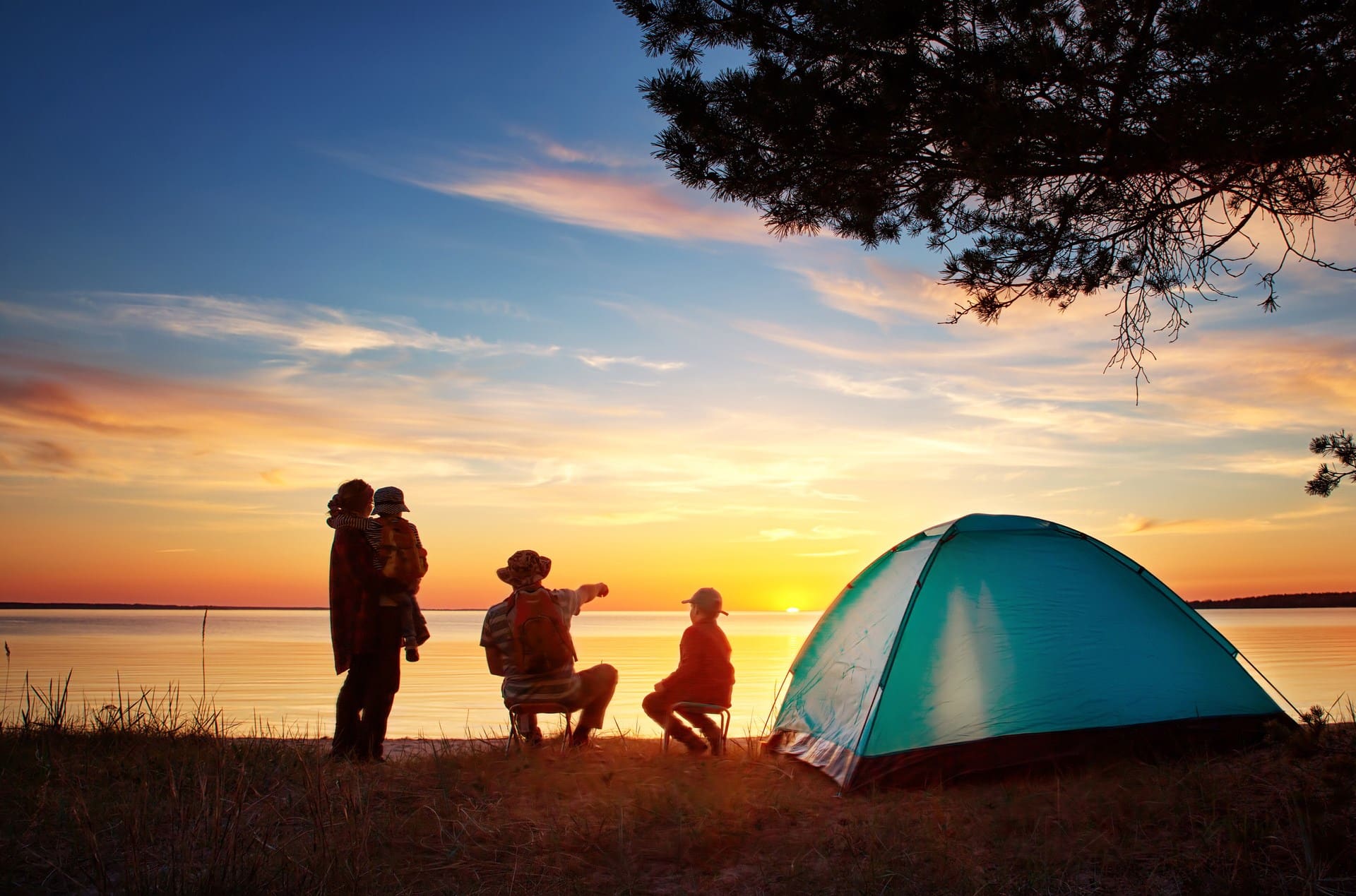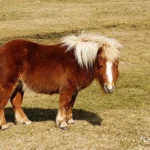
Camping, with its roots dating back to the 19th century, has evolved into a globally cherished recreational activity that unites individuals with nature, fosters community, and creates lasting memories. From the pioneer camping trip in the Adirondack Mountains to the establishment of the first official campground in California, each historical milestone has contributed to shaping the diverse and vibrant landscape of camping. In this exploration, we delve into 25 intriguing historical facts and numerical trivia about camping, unveiling the fascinating details behind significant dates, figures, records, and innovations that have defined the world of outdoor adventure. Join us on a journey through the annals of camping history, where the simple act of setting up a tent becomes a rich tapestry woven with stories of exploration, camaraderie, and the enduring human connection to the great outdoors.
First Recorded Camping Trip:
In 1869, the pioneer of camping, Thomas Hiram Holding, embarked on the first recorded camping trip in the Adirondack Mountains of New York, USA. Holding, an English tailor by trade, sought solace in nature to escape the hustle and bustle of city life. He documented his experience in the book “The Camper’s Handbook,” which laid the foundation for modern camping practices. Holding’s journey set the stage for the emergence of camping as a recreational activity, inspiring countless outdoor enthusiasts to follow in his footsteps.
First Official Campground:
The birth of modern camping took a significant step forward in 1906 with the establishment of the first official campground at BrownTrout Campground in California, USA. Managed by the California Conservation Corps, this campground marked a pivotal moment in the history of outdoor recreation. The site provided a designated space for campers, setting a precedent for organized camping facilities worldwide. The creation of such campgrounds laid the groundwork for a more structured and accessible approach to enjoying the great outdoors.
Birth of Modern Camping:
In 1901, camping as a recreational activity gained formal recognition with the founding of the Camping and Caravanning Club by Thomas Hiram Holding. This pivotal moment occurred in Dartmoor, England, where Holding’s passion for the outdoors led him to establish the world’s first camping organization. The club aimed to promote the enjoyment of camping, caravanning, and outdoor activities while advocating for responsible and sustainable practices. Holding’s vision played a crucial role in shaping the ethos of modern camping and laid the groundwork for the widespread popularity of camping clubs globally.
Creation of Sleeping Bag:
The advent of camping comfort can be traced back to 1876 when P.H. Breuil invented the sleeping bag. Initially designed for Arctic exploration, the sleeping bag found its way into the camping scene, offering a portable and cozy solution for outdoor sleeping. Notably, Arctic explorer Dr. Fridtjof Nansen utilized Breuil’s invention during his expeditions. The sleeping bag’s evolution from a necessity in extreme conditions to a staple in camping gear highlights its enduring impact on outdoor enthusiasts worldwide.
Introduction of Tent Camping in Military:
The late 19th century witnessed the incorporation of tent camping into military strategies, notably during the Civil War and Boer War. Tents provided essential shelter for soldiers, offering protection from the elements during campaigns. This military application played a pivotal role in popularizing tent camping, as returning soldiers shared their experiences and skills with civilian communities. The intersection of military tactics and recreational camping laid the groundwork for the widespread adoption of tents in outdoor adventures.
World’s First National Park:
In 1872, the United States made history by establishing the world’s first national park, Yellowstone National Park. Located primarily in Wyoming, with parts in Montana and Idaho, Yellowstone became a haven for camping enthusiasts, offering unparalleled natural beauty and diverse ecosystems. The creation of national parks set a global precedent for preserving natural landscapes and providing accessible spaces for camping, reinforcing the intrinsic connection between conservation efforts and outdoor recreation.
First RV (Recreational Vehicle):
The year 1910 marked a turning point in camping history with the introduction of the first recreational vehicle (RV) – the Pierce-Arrow Touring Landau. This innovative vehicle, equipped with a chamber pot and a folding sink, revolutionized the camping experience. The Pierce-Arrow combined transportation and living quarters, setting the stage for the development of modern RVs. The marriage of mobility and comfort transformed camping into a more luxurious and convenient activity, paving the way for the nomadic lifestyle associated with RV enthusiasts.
Longest Continuous Campfire:
In 2007, a remarkable event known as the Campfire for Peace took place in Poland, lasting an impressive seven days and seven nights. The enduring flame brought together a diverse community of campers, united by the shared experience of gathering around a campfire. This record-breaking campfire not only exemplified the resilience of outdoor enthusiasts but also symbolized the universal appeal of camping as a communal and enduring activity that transcends cultural and geographical boundaries.
Highest Altitude Camping Site:
For those seeking the ultimate camping challenge, the Everest Base Camp stands as the pinnacle, situated at an awe-inspiring altitude of approximately 17,600 feet (5,364 meters). Nestled in the heart of the Himalayas, this high-altitude camping site attracts adventurers from around the world, offering a unique blend of breathtaking views and unparalleled challenges. Camping at such heights requires specialized gear and acclimatization, making it a testament to the indomitable spirit of those who dare to conquer the world’s highest peaks.
Lowest Altitude Camping Site:
On the opposite end of the altitude spectrum lies the Dead Sea in Jordan, home to one of the world’s lowest camping sites at approximately 1,411 feet (430 meters) below sea level. Camping along the shores of the Dead Sea provides a surreal experience, as campers find themselves surrounded by stunning landscapes and the therapeutic waters of the Earth’s lowest point. This unique camping destination showcases the diversity of environments that camping enthusiasts can explore, from towering mountain peaks to the depths of ancient geological wonders.
Largest Camping Event:
New Zealand hosted one of the most massive camping events, known as “The Big Kahuna,” attracting over 6,000 campers. This record-breaking gathering showcased the fervor and camaraderie within the camping community. The event featured a diverse range of activities, from outdoor workshops to live performances, underscoring the multifaceted appeal of camping beyond the traditional outdoor experience. “The Big Kahuna” stands as a testament to the global popularity of camping as a social and recreational phenomenon.
Most Expensive Camping Gear:
At the pinnacle of luxury camping gear is the Hilleberg Black Label Soulo Tent, priced at around $1,000 as of 2022. Renowned for its durability and weather resistance, this high-end tent caters to the discerning camper seeking both comfort and performance. The extravagant price tag reflects the meticulous design, premium materials, and cutting-edge technology incorporated into this pinnacle of camping luxury, offering a glimpse into the opulent side of outdoor recreation.
Oldest Campfire Cooking Technique:
Dutch Oven Cooking, dating back to the 17th century, stands as one of the oldest and enduring campfire cooking techniques. Originating in the Netherlands, the Dutch oven became a staple in early American campfires. Its versatility in baking, roasting, and stewing made it an indispensable tool for settlers and explorers. Today, Dutch oven cooking has experienced a resurgence in popularity, with enthusiasts embracing this historic technique to add a nostalgic touch to their camping culinary adventures.
Introduction of Tent Camping in Military:
The late 19th-century integration of tent camping into military operations during the Civil War and Boer War marked a significant chapter in the history of outdoor recreation. Tents became vital for providing soldiers with shelter during extended campaigns. The knowledge and skills acquired by soldiers in setting up and managing tents were later disseminated to civilian communities, contributing to the widespread adoption of tents in recreational camping. This historical intersection between military necessity and outdoor leisure laid the groundwork for the tent’s ubiquity in modern camping.
Largest Camping Tent:
The Coleman WeatherMaster 10-Person Tent claims the title of the largest camping tent, boasting dimensions of 17 x 9 feet. This spacious and accommodating tent is designed to comfortably house large camping groups, emphasizing the importance of communal experiences in outdoor adventures. With multiple rooms, weather-resistant features, and ample headroom, the Coleman WeatherMaster exemplifies the evolution of camping tents to meet the diverse needs of modern campers.
Longest Continuous RV Trip:
Michael and Millie Kittredge embarked on an extraordinary journey, undertaking the longest continuous RV trip that spanned an impressive 17 years. Covering over 600,000 miles, this couple embraced a nomadic lifestyle, exploring the diverse landscapes of North America. Their remarkable journey not only exemplifies the freedom and mobility offered by RV travel but also serves as an inspiration for those seeking unconventional and extended outdoor adventures.
Largest Campfire Gathering:
The “Big Chill” Campfire in Canada set the stage for the largest campfire gathering, bringing together over 800 participants. This record-breaking event showcased the universal appeal of sitting around a campfire, fostering a sense of community and connection among campers. The “Big Chill” not only broke records but also highlighted the enduring tradition of sharing stories, laughter, and warmth around a flickering flame.
First Official Campground Reservation System:
The establishment of the first official campground reservation system can be credited to Yellowstone National Park in 1872. Recognizing the growing popularity of camping, the park implemented a reservation system to manage the influx of visitors. This pioneering approach laid the groundwork for modern campground management systems, streamlining the camping experience and ensuring that campers could secure their preferred spots in advance.
Most Remote Campsite:
The Solomon Islands boast one of the world’s most remote campsites on Anuta Island. Accessible only by boat, this secluded location offers a truly off-the-grid camping experience. Surrounded by pristine beaches and untouched nature, the Anuta Island campsite attracts adventurers seeking solitude and a connection with unspoiled environments, illustrating the allure of remote camping destinations.
Highest Attendance at a Camping Music Festival:
The Glastonbury Festival in the UK holds the record for the highest attendance at a camping music festival, with over 200,000 attendees. This iconic event seamlessly blends live music, performing arts, and camping, creating a unique and vibrant atmosphere. The massive turnout at Glastonbury reflects the global enthusiasm for combining outdoor experiences with cultural and artistic festivities, showcasing the enduring popularity of camping festivals worldwide.
Largest Campfire Circle:
The “Campfire Circle of Friendship” in India stands as a remarkable testament to the communal spirit of camping, attracting over 12,000 participants. This colossal gathering aimed not only to break records but also to foster a sense of unity and camaraderie among attendees. The “Campfire Circle of Friendship” exemplifies the power of camping to bring people together from diverse backgrounds, emphasizing the shared joys of outdoor experiences and the bonds forged around a common campfire.
First National Camping Month:
In June 2010, President Barack Obama declared June as the first National Camping Month in the United States. This official recognition underscored the cultural and recreational significance of camping, encouraging people to explore the great outdoors and embrace the benefits of outdoor activities. National Camping Month serves as an annual celebration, promoting the physical, mental, and social well-being that camping can provide to individuals and communities.
Most Expensive Camping Trip:
For those seeking the epitome of luxury camping, the Luxury African Safari Camping experience offers an unparalleled adventure with a price tag upwards of $10,000 per person. This extravagant trip combines the thrill of camping with the opulence of a safari, providing campers with exclusive access to pristine landscapes and wildlife. The cost reflects the premium services, gourmet dining, and personalized experiences that redefine the boundaries of luxury camping.
Longest Continuous Campfire Song Session:
The Guinness World Record for the longest continuous campfire song session was achieved in the United States, lasting an impressive 45 hours. This feat not only showcased the endurance and musical talents of the participants but also highlighted the cultural significance of music in the camping experience. The continuous campfire song session became a celebration of creativity, community, and the timeless tradition of sharing music around the warmth of a campfire.
First Commercially Available Portable Grill:
The year 1951 marked a culinary milestone in camping with the introduction of the first commercially available portable grill by Weber. The Weber Kettle Grill revolutionized outdoor cooking, providing campers with a convenient and efficient way to grill their favorite meals. This innovative portable grill paved the way for a new era of camping cuisine, emphasizing the importance of delicious and diverse food options in enhancing the overall camping experience. The iconic kettle design remains a symbol of outdoor cooking heritage to this day.
Camping FAQs:
General Camping:
- What kind of camping trip should I take?
This depends on your experience level, interests, and who you’re going with. Here are some options:
- Car camping: This is the most common type of camping, where you drive to a campsite and set up a tent or RV. It’s a good choice for beginners and families.
- Backpacking: This involves carrying your gear on your back and hiking to a remote campsite. It requires more planning and fitness but offers a deeper wilderness experience.
- Glamping: This is a luxurious form of camping with amenities like beds, electricity, and sometimes even hot tubs! It’s a great option for those who want to enjoy nature without sacrificing comfort.
- Where should I go camping?
There are campsites all over the world, from national parks and forests to private campgrounds. Consider factors like the type of landscape you enjoy (mountains, beaches, forests), amenities you want (bathrooms, showers, laundry), and activities available (hiking, swimming, fishing). Research online or ask park rangers for recommendations.
- What do I need to pack for camping?
This will vary depending on the length of your trip, the climate, and your chosen campsite amenities. Here are some essentials:
- Shelter: Tent, sleeping bag, sleeping pad
- Clothing: Layers for different weather conditions, rain gear, comfortable shoes, hat
- Cooking gear: Camp stove, fuel, cookware, utensils, plates, mugs
- Food and drinks: Enough for your trip, with a cooler if needed
- First-aid kit: Including essentials like bandages, pain relievers, and insect repellent
- Headlamp or flashlight: Essential for nighttime
- Navigation: Map and compass or a GPS device
- Miscellaneous: Camp chairs, table, bug spray, sunscreen, toilet paper, trowel (for burying waste), fire starter (if allowed), etc.
- What are some Leave No Trace principles?
Leave No Trace is a set of ethics for enjoying the outdoors responsibly. Here are some key principles:
- Plan ahead and prepare: Research the area and pack appropriately.
- Travel and camp on durable surfaces: Use designated campsites or established trails to minimize impact.
- Dispose of waste properly: Pack out all trash, including food scraps and toilet paper (bury human waste in a cathole dug 6-8 inches deep, at least 200 feet from water sources).
- Leave what you find: Don’t disturb natural objects or wildlife.
- Minimize campfire impacts: Only have fires in designated fire rings and use dead and downed wood.
- Respect wildlife: Keep your distance, store food properly, and don’t feed animals.
Campsite Facilities and Regulations:
- Do I need reservations for a campsite?
Many popular campsites, especially in national parks, require reservations in advance, particularly during peak season. Always check with the campground before you go.
- What amenities are available at the campsite?
Campsites offer varying amenities. Some may have flush toilets, showers, laundry facilities, and even camp stores. Others may be more basic with just vault toilets and fire rings. Check the campground website or call for details.
- Are campfires allowed?
Campfires may not always be allowed, especially during fire season. Always check for fire restrictions before you go and only have fires in designated fire rings. Use only dead and downed wood for fuel, and extinguish your fire completely before leaving.
- What are the quiet hours at the campsite?
Most campsites have designated quiet hours, typically from around 10 pm to 6 am. Be respectful of your fellow campers and keep noise levels down during this time.
- Can I bring my pet camping?
Some campgrounds are pet-friendly, but some may have restrictions on pet breeds or require them to be leashed at all times. Always check the campground’s pet policy before bringing your furry friend.
Safety and Wildlife:
- What should I do if I encounter wildlife?
Never approach or feed wild animals. Store your food and trash properly in bear canisters if required. Be aware of your surroundings and make noise while hiking to avoid surprising animals.
- What are some tips for staying safe in the wilderness?
Let someone know your itinerary before you go. Be aware of weather conditions and potential hazards. Dress appropriately for the climate. Bring a first-aid kit and know how to use it. If you get lost, stay calm and try to signal for help.
Cooking and Food:
- What kind of food should I bring camping?
Camp food should be easy to prepare, portable, and non-perishable if you don’t have a cooler. Here are some ideas:
- Pre-made meals: Sandwiches, wraps, salads, pasta salad
- Dried or canned goods: Pasta, rice, beans, canned meats or fish, oatmeal
- Fresh produce: Fruits and vegetables that don’t require refrigeration (apples, oranges, carrots, potatoes)
- Trail mix and granola bars: For snacks and quick energy boosts
- How do I keep food cold while camping?
If you don’t have a campsite with a refrigerator or freezer, a cooler is essential. Pack your cooler with plenty of ice and pre-chill your food and drinks before leaving.
- What are some tips for camp cooking?
Campfire cooking can be fun and delicious. Invest in a good camp stove and learn some basic camp cooking techniques like grilling, foil packet meals, and campfire stews.
- How do I properly dispose of food waste while camping?
Never burn food scraps in your campfire. Instead, pack out all food waste, or if allowed, dispose of it in designated food waste bins at the campsite.
Gear and Equipment:
- What kind of tent should I buy?
The best tent for you will depend on factors like the number of people you’re camping with, the climate you’ll be camping in, and your budget. Here are some types of tents:
- Dome tents: These are the most popular type of tent, easy to set up and good for all-around use.
- Backpacking tents: Lightweight and portable, ideal for backpacking trips.
- Cabin tents: Spacious and comfortable, good for car camping with families or groups.
- What’s the difference between a sleeping bag and a sleeping pad?
A sleeping bag keeps you warm at night, while a sleeping pad insulates you from the cold ground and provides comfort. Both are essential for a good night’s sleep while camping.
- How do I choose the right sleeping bag?
Consider the temperature rating of the sleeping bag, which indicates how cold it can comfortably keep you warm. Choose a bag rated for colder temperatures than you expect to encounter.
- What are some other essential camping gear items?
- Headlamp or flashlight: Essential for nighttime use around the campsite.
- Camp chairs and table: Provide comfort for relaxing and eating outdoors.
- First-aid kit: Be prepared for minor injuries.
- Multi-tool: A versatile tool for various camp tasks.
- Map and compass or GPS device: For navigation, especially in remote areas.
- How do I take care of my camping gear?
Proper care extends the life of your gear. Always clean and dry your tent completely before storing it. Wash sleeping bags and sleeping pads according to the manufacturer’s instructions. Store your gear in a cool, dry place when not in use.
Hopefully, this extended FAQ helps you plan your next camping trip! Remember, the most important thing is to get out there, enjoy nature, and create lasting memories.









